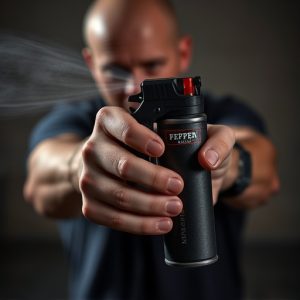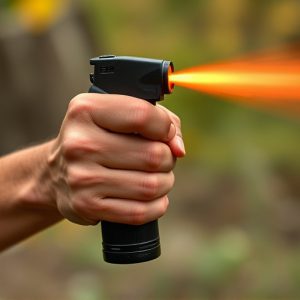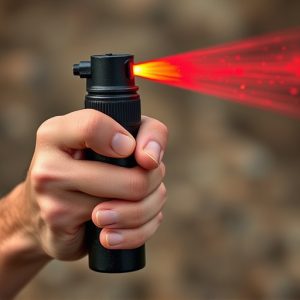Mastering Pepper Spray Safety: Usage, Storage, and Legality
Pepper spray, a non-lethal self-defense tool, uses capsaicin to temporarily incapacitate assailants,…….
Pepper spray, a non-lethal self-defense tool, uses capsaicin to temporarily incapacitate assailants, optimal for close range (2-3 meters) against knife attackers or to create escape time. Its use should be a last resort after exhausting de-escalation methods; legalities and application vary by jurisdiction, requiring understanding of local regulations, age restrictions, and training. Safe storage involves keeping it secure, cool, dry, and out of reach, while responsible usage entails adhering to laws, aiming for attacker's face/eyes at safe distance, disposal, and hand washing post-use.
Personal security is a paramount concern in today’s world, and pepper spray has emerged as an effective inflammatory defense product. This article delves into the intricacies of pepper spray, exploring its composition, effectiveness, and safe usage guidelines. We’ll discuss when it’s legal to employ pepper spray and provide best practices for storage and application. Understanding the correct use of this powerful tool is essential, especially in knowing when to use pepper spray safely.
- Understanding Pepper Spray: Its Composition and Effectiveness
- When is Pepper Spray Legal and Safe to Use?
- Best Practices for Storing and Using Pepper Spray Safely
Understanding Pepper Spray: Its Composition and Effectiveness
Pepper spray, a powerful personal security tool, is a topical agent designed to cause temporary but intense irritation and disorientation in potential assailants. Its composition typically includes capsaicin, the same chemical that gives chili peppers their heat, along with various solvents and additives to enhance its delivery and effectiveness. When sprayed, capsaicin binds to pain receptors in the eyes, nose, and respiratory system, leading to a burning sensation, teary eyes, difficulty breathing, and temporary blindness.
The effectiveness of pepper spray depends on proper usage. It’s crucial to understand when and how to deploy it safely. Pepper spray is most effective at close range, usually within 2-3 meters, as the spray cloud dissipates quickly. It’s recommended for self-defense against attackers who are armed with knives or other bladed weapons, or in situations where you need time to escape. However, it should be used as a last resort when all other means of avoiding or de-escalating a conflict have been exhausted, due to its non-lethal nature and potential side effects.
When is Pepper Spray Legal and Safe to Use?
Pepper spray, an inflammatory defense product designed to temporarily incapacitate an assailant, is a tool many individuals consider for personal security. However, its legal and safe use depends on various factors and varies by jurisdiction. It is crucial to understand when and where pepper spray can be employed legally without infringing upon rights or inviting unnecessary consequences.
In general, pepper spray is legal in most places when used for self-defense against an imminent physical threat. This typically includes situations where one feels their personal safety is at risk and there’s no other reasonable means of escaping or de-escalating the encounter. It’s important to note that specific laws differ across regions, so understanding local regulations is essential before considering pepper spray as a defense mechanism. Additionally, many jurisdictions have restrictions on who can possess and carry pepper spray, with age limits and requirements for training or licensing often being implemented for responsible use.
Best Practices for Storing and Using Pepper Spray Safely
When storing pepper spray, keep it in a secure location that is out of reach for children and unauthorized individuals. Ideally, store it in a cool, dry place away from direct sunlight or extreme temperatures. Always keep the spray in its original packaging with the safety clip attached to prevent accidental discharge. Regularly check the expiration date and replace the spray as needed.
For safe usage, familiarize yourself with local laws and regulations regarding pepper spray. Understand when and how to deploy it effectively. Aim for the face or eyes of an attacker, keeping a safe distance to ensure you don’t risk inhaling the spray yourself. After use, dispose of the canister responsibly according to local guidelines. Wash your hands thoroughly to remove any residual chemicals and store your spray in a designated safe place until needed again.
Pepper spray, as a personal security inflammatory defense product, offers a powerful yet legal option for self-protection when faced with potential threats. Understanding its composition, knowing the legalities around its use, and adhering to best practices for storage and application are key to ensuring its safety and effectiveness. By being informed and prepared, individuals can take control of their security and deter potential harm in various situations, making pepper spray a valuable tool for personal defense when used responsibly.


